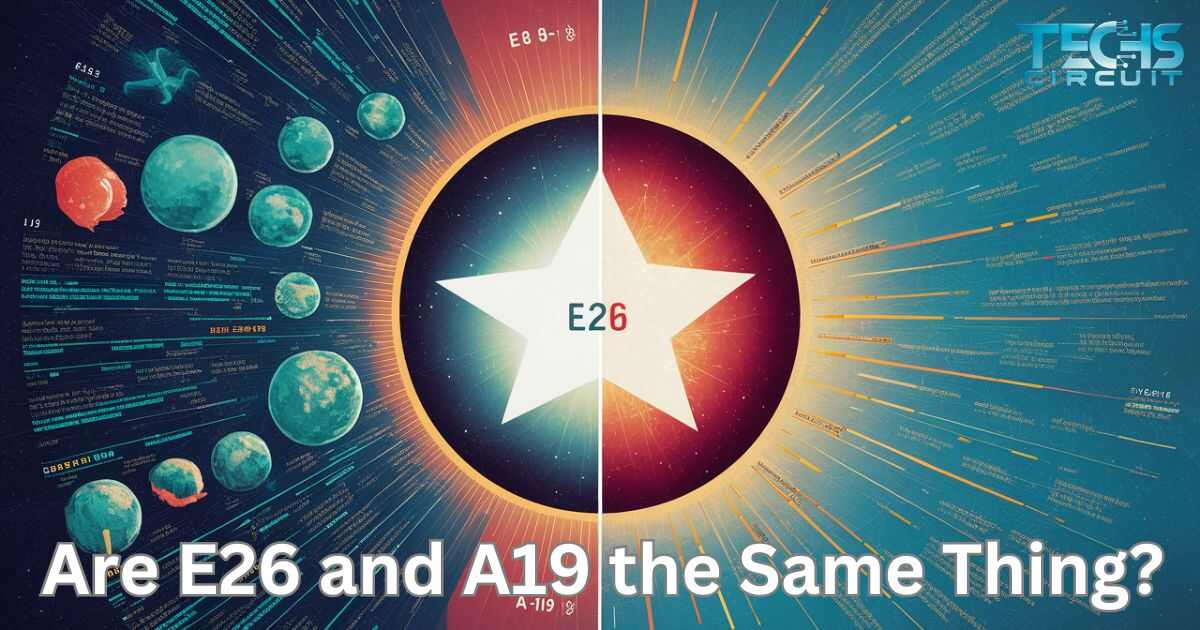E26 and A19 are terms often heard in lighting discussions. They refer to different aspects of light bulbs. Understanding these terms is crucial for making informed lighting choices.
Choosing the right light bulb can be confusing. There are many terms to understand. E26 and A19 are two such terms that often cause confusion. This article will clarify these concepts. We’ll explore their differences and similarities.
The Basics of Light Bulb Terminology
Light bulbs have various components. Each part has its own naming convention. The base and shape are two key elements. E26 refers to the base. A19 describes the shape and size.
Why Understanding E26 and A19 Matters
Knowing these terms helps in selecting the right bulb. It ensures compatibility with your fixtures. It also aids in achieving desired lighting effects. Let’s delve deeper into each term.
What is E26?
E26 is a specific type of light bulb base. It’s widely used in North America. The “E” stands for Edison screw. The number “26” indicates the diameter in millimeters.
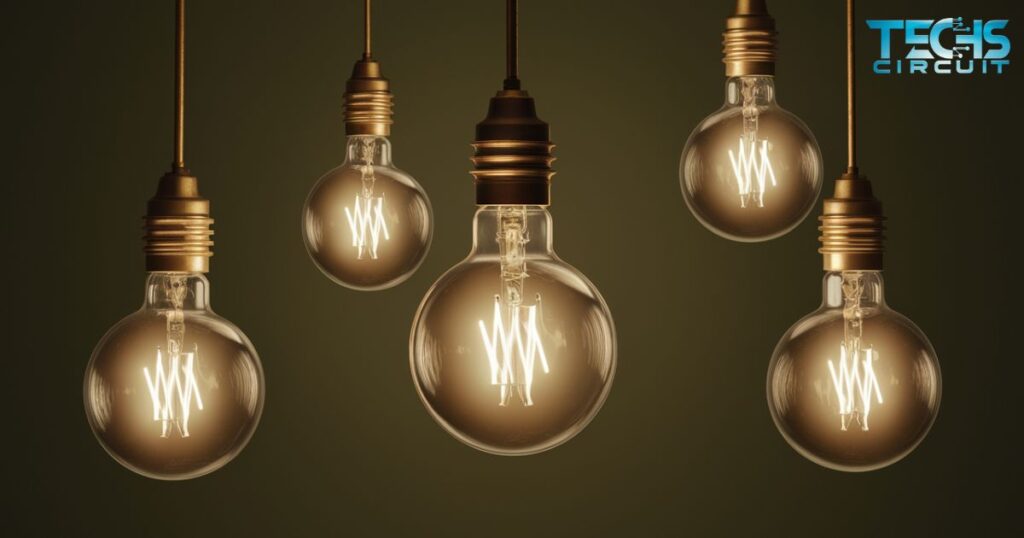
Characteristics of E26 Bases
E26 bases have several key features:
- 26mm diameter
- Screw-in design
- Medium base classification
- Standard in most US households
History of E26 Bases
Thomas Edison invented this base type. It has been in use for over a century. Its popularity stems from its simplicity and reliability. Many modern bulbs still use this base design.
Common Applications of E26 Bases
E26 bases are versatile. They’re found in various lighting fixtures:
- Table lamps
- Floor lamps
- Ceiling fixtures
- Outdoor lighting
What is A19?
A19 refers to a bulb’s shape and size. It’s the classic light bulb shape we all recognize. The “A” stands for arbitrary. The “19” indicates the diameter in eighths of an inch.
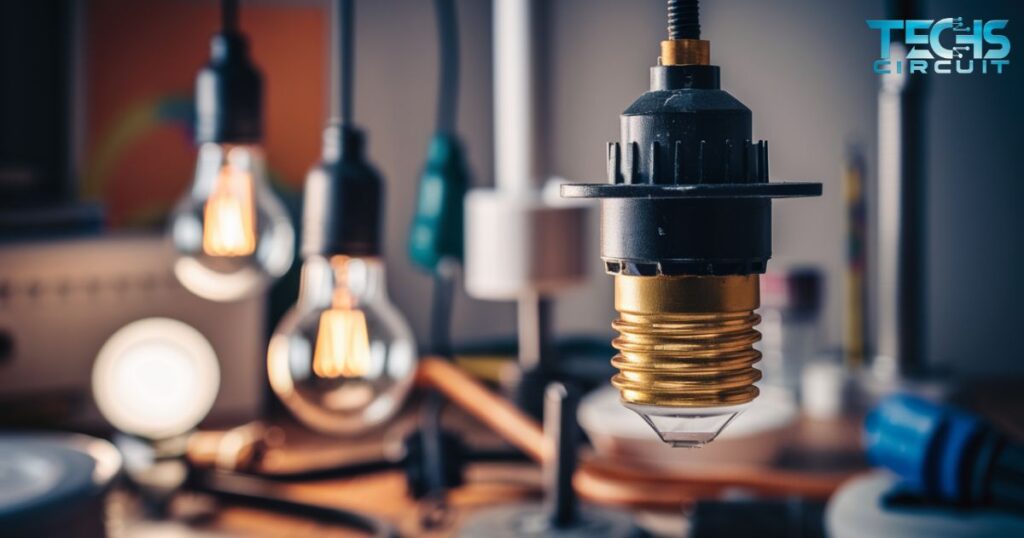
Characteristics of A19 Bulbs
A19 bulbs have distinct features:
- Pear-like shape
- 2.375 inches in diameter
- Usually about 4.13 inches in length
- Versatile for many lighting needs
Evolution of A19 Bulbs
A19 bulbs have evolved over time. They started as incandescent bulbs. Now they come in various technologies:
- LED
- CFL
- Halogen
Common Uses for A19 Bulbs
A19 bulbs are widely used. They’re suitable for many applications:
- General home lighting
- Office spaces
- Retail environments
- Hospitality settings
The Relationship Between E26 and A19
E26 and A19 often go hand in hand. Many A19 bulbs use E26 bases. However, they are not the same thing. Let’s explore their relationship.
How E26 and A19 Work Together
E26 bases can support various bulb shapes. A19 is just one of them. Most A19 bulbs in the US have E26 bases. This combination is common but not exclusive.
Key Differences Between E26 and A19
Here’s a table highlighting the main differences:
| Aspect | E26 | A19 |
| Refers to | Base type | Bulb shape and size |
| Measurement | 26mm diameter base | 2.375 inches diameter bulb |
| Function | How the bulb connects | Overall bulb appearance |
| Interchangeability | Works with various shapes | Usually uses E26 base, but not always |
Common Misconceptions
Many people confuse E26 and A19. They think they’re interchangeable terms. This is not correct. E26 is about the base. A19 is about the bulb’s shape.
Choosing the Right Bulb
Selecting the appropriate bulb involves considering both E26 and A19. Here are some factors to keep in mind:
Compatibility Considerations
Check your fixture’s requirements. Ensure the base type matches. Verify if the bulb shape fits the fixture. Consider any size limitations.
Performance Factors
Think about your lighting needs:
- Brightness (lumens)
- Color temperature
- Energy efficiency
- Dimmability
Cost and Longevity
Compare initial costs with long-term savings. Consider the lifespan of different bulb types. Factor in energy consumption over time.
Advantages of E26 and A19 Combinations
E26 bases with A19 bulbs offer several benefits. They’re widely available. They fit most standard fixtures. Let’s explore more advantages.
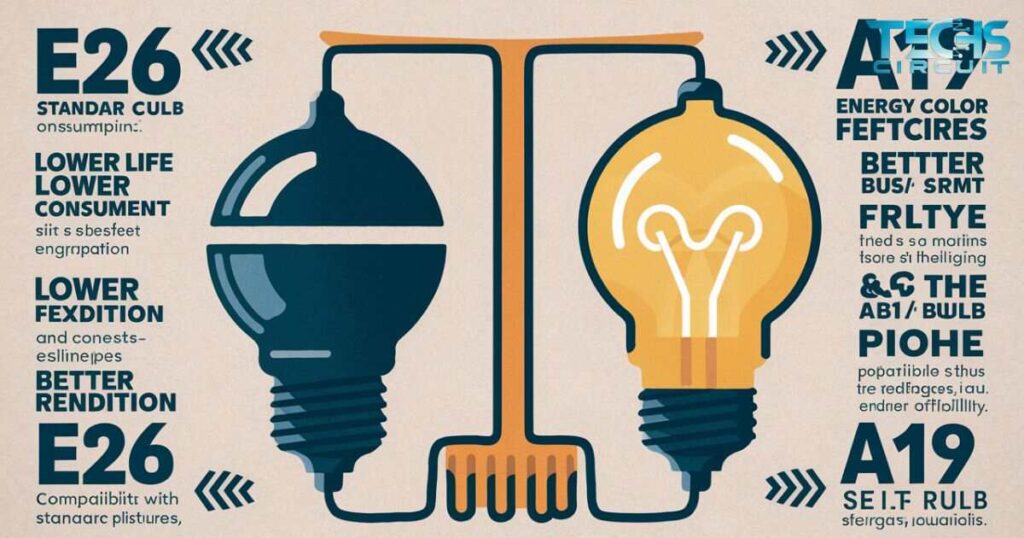
Versatility and Convenience
These bulbs work in many settings. They’re easy to find and replace. Most hardware stores carry them. This makes maintenance simple.
Energy Efficiency Options
Many A19 LED bulbs use E26 bases. This allows for easy upgrades. You can switch to energy-efficient options without changing fixtures.
Design Flexibility
A19 bulbs come in various finishes. They can be clear, frosted, or colored. This offers design flexibility. You can change the look without changing the fixture.
Also Read This Article:Pondershort.com: Your Gateway to Quick Knowledge and Endless Discovery
Common Mistakes to Avoid
When dealing with E26 and A19 bulbs, people often make mistakes. Here are some to watch out for:
Ignoring Base Type
Always check the base type. Don’t assume all bulbs will fit. E26 is common but not universal. Some fixtures require different bases.
Overlooking Bulb Shape
A19 might not be suitable for all fixtures. Some may require different shapes. Check your fixture’s requirements before purchasing.
Focusing Only on Wattage
Wattage isn’t everything. Consider lumens for brightness. Look at the color temperature for ambiance. Energy-efficient bulbs may have lower wattage but equal brightness.
Future Trends in Lighting Technology
The lighting industry is constantly evolving. New technologies are emerging. These could impact E26 and A19 standards.
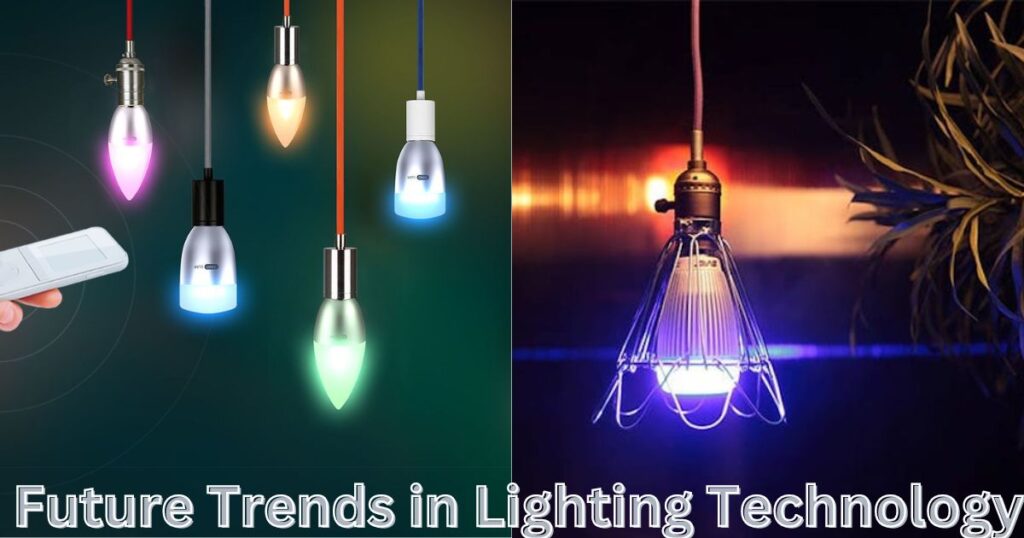
Smart Lighting Integration
Smart bulbs are gaining popularity. Many use E26 bases and A19 shapes. They offer additional features like color changing and remote control.
Advanced LED Technologies
LEDs are becoming more efficient. New designs may alter traditional shapes. However, E26 bases remain popular for compatibility.
Sustainability Focus
There’s a growing emphasis on eco-friendly lighting. This may lead to new materials and designs. Energy efficiency will continue to be a priority.
FAQ’s
What does E26 stand for?
E26 stands for Edison 26mm. It refers to the diameter of the screw base.
Can all A19 bulbs fit in E26 sockets?
Most A19 bulbs in the US use E26 bases. However, always check the base type to ensure compatibility.
Are LED A19 bulbs different from incandescent A19 bulbs?
They have the same shape and size. The main difference is in the technology and efficiency.
Can I use an E26 bulb in any lamp?
E26 bulbs fit most standard US fixtures. However, always check your lamp’s specifications.
How do I know if I need an E26 or A19 bulb?
Check your fixture for the base type (E26) and consider the space for the bulb shape (A19).
Conclusion
E26 and A19 are related but distinct concepts in lighting. E26 refers to the base type, while A19 describes the bulb shape. Understanding these terms helps in making informed lighting choices.
Choosing the right bulb involves considering both the base and shape. This ensures compatibility and optimal performance. As lighting technology advances, these standards may evolve, but their importance in consumer choice remains significant.
